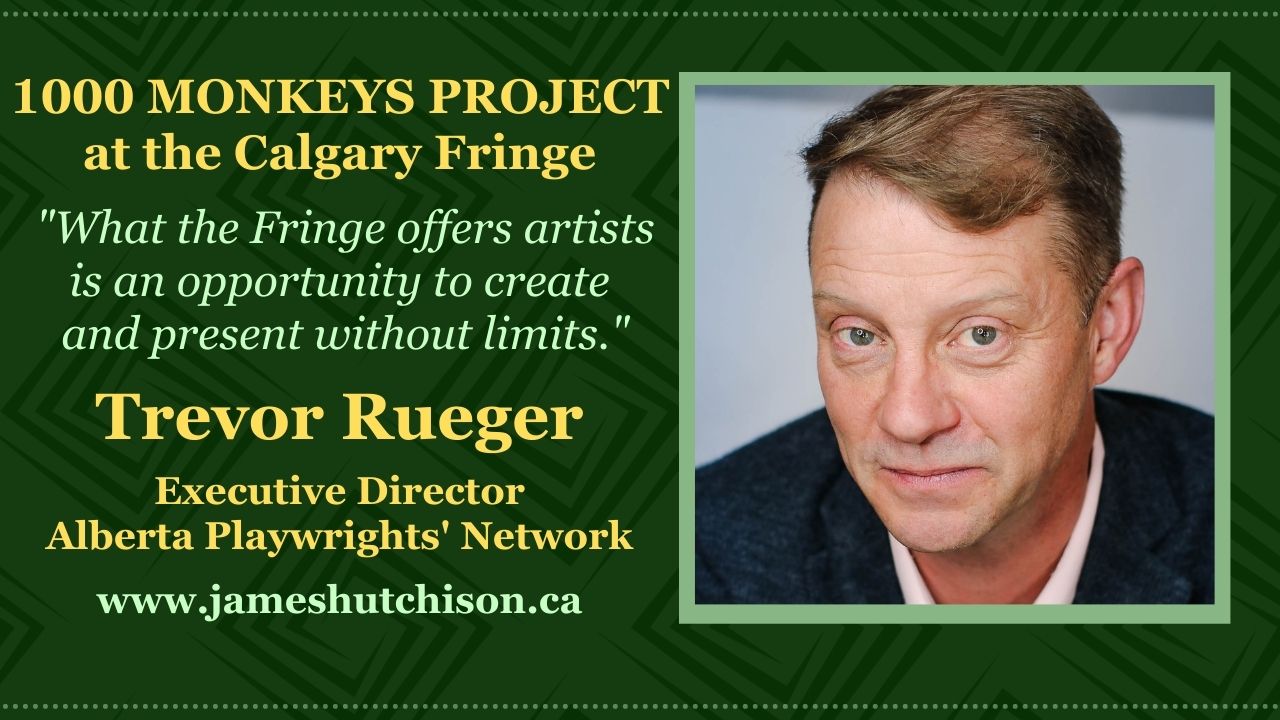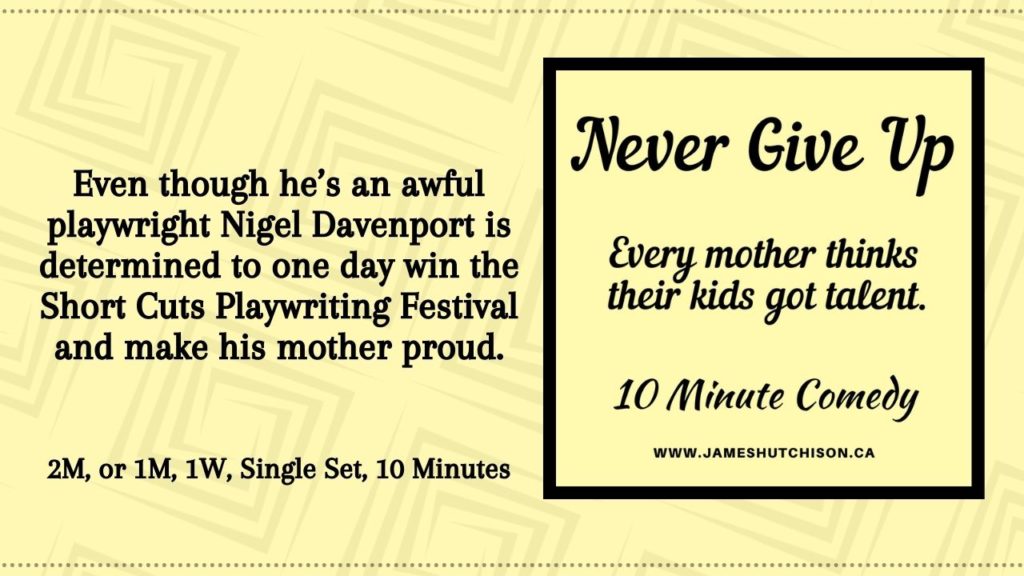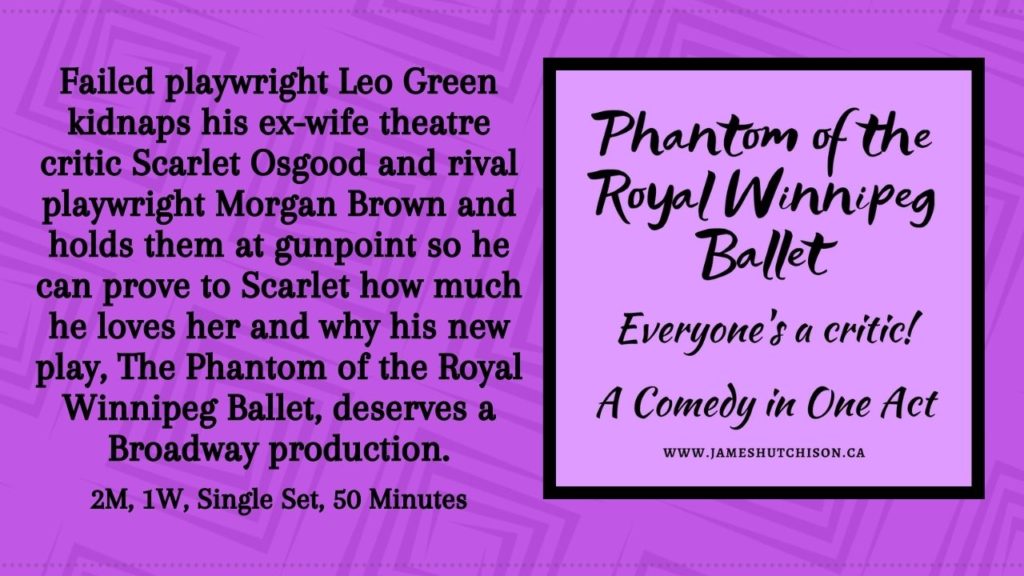
The 1000 Monkeys Project featuring five Calgary playwrights is just one of the many shows you can see during the unrestricted, unexpected, unforgettable 17th Annual Calgary Fringe Festival running in Inglewood from Friday, August 4th to Saturday, August 12th.
Other shows include:
- Mail Ordered by Shanice Stanislaus – a “Pick of the Fringe” at last year’s Vancouver Fringe Festival that has been described as “Wildly Funny” and “Delightfully Interactive.”
- Date Night by the Sunflower Collective Theatre – an interactive, semi-improvised play about dating, caring, and mental illness in today’s world where audiences navigate the awkwardness and joy of second dates and the intimacy of telling someone who you really are behind the dating profile.
- Underbelly by Ragmop Theatre – a one-woman surrealist physical comedy featuring monsters, dismemberment, shower opera, inconceivable truths, and a hot date.
For complete details about all the shows in this year’s festival and to purchase tickets for in-person shows or on-demand shows visit the Calgary Fringe Festival Website or drop by the Fringe Festival Box Office at Festival Hall and pick up a program. Regular tickets are just $20 bucks with several shows offering multiple pay-what-you-want performances.
My own ten-minute comedy Happy Birthday Theo about two old friends who have fallen on hard times and now live in a junk heap is a part of the 1000 Monkeys Project and is presented by the Alberta Playwrights’ Network. I contacted Trevor Rueger the Executive Director of APN by e-mail to ask him a few questions about the Fringe and what exactly the 1000 Monkeys Project is all about.
TREVOR RUEGER
The two previous years we partnered with the Calgary Fringe and invited playwrights to spend 24 continuous hours writing a piece for presentation at the end of the 24 hours. We housed, fed, and watered the playwrights at Festival Hall the first weekend of the Fringe. When the 24 hours were up, the writers would go home and sleep, while we would read and rehearse the plays and then present them to an audience that evening.
Because the Fringe is getting back to pre-COVID levels for the amount of work they present (which is a great thing), our presentation time was limited. So, this year we decided to model the 1000 Monkeys Project on an event we produce in Edmonton called EDMONten. We invited Calgary and area playwrights to submit complete 10-minute plays. We had 23 entries, and a jury selected the 5 works that are being presented at this year’s Festival. So, we are considering ourselves the best value for money at the Calgary Fringe – you’re going to get 5 plays for the price of 1.
JAMES HUTCHISON
I like the ten-minute format. In fact, I think you can cover a lot in ten minutes. What are the things you think make for a great ten-minute play and just how big a story can you tell in that time?
TREVOR
I love 10-minute plays, not just because I have a short attention span… (stops writing because he gets a Twitter notification) …sorry where was I? I love 10–minute plays because as a writer you have to get to the crux of the story immediately. You don’t have a lot of time to linger in exposition, specifically about the time and setting.
This means that as a writer you are kind of forced to create a situation that is immediately recognizable to an audience and is universal in its theme. You are also forced as a writer to make the action immediate. If Hamlet was a ten-minute play, you would have the ghost of Hamlet’s father show up and say he was murdered by Claudius. “Ghost: Revenge my untimely murder. / Hamlet: I’m on it pops!” The plays this year are a variety of big themes and events, and small snapshots of human interaction.
JAMES
So, tell me a little about the plays we’re going to see. Are they comedies? Dramas? Rants about corporate greed or diatribes about pineapple on pizza? Are they stories of love? Ambition? Hope? Despair? What are we going to see?
TREVOR
You’re going to see a beautiful mix of plays – an absurdist look at corporate culture, a drama about the restaurant industry, a Beckett-esque search for the meaning of life, a scene from a mysterious waiting room, and a memory play. Each play is wildly different from the next, but what makes them fantastic is the well-crafted characters in a variety of situations dealing with a myriad of crises.
JAMES
Alright, you can’t have a reading without actors. Who are some of the actors you’ve lined up for the show?
TREVOR
Casting a number of plays for one presentation always presents a challenge. We can’t afford to hire the perfect actor for each character. So we cast an ensemble of really talented character actors who are able to make big, strong, and quick choices. What we tell the audience before we start the presentation is that “not every character will be portrayed exactly as written in terms of age, race, or gender, so we ask you to use your imagination.”
In the cast, this year is Elinor Holt who was most recently seen in the Stage West production of 9 to 5: The Musical, for which she received a Betty Mitchell Award for Outstanding Performance, Lara Schmitz an incredibly talented actor and writer, Eric Wigston who audiences will have seen on stages all over the city, and myself reading stage directions and taking on a couple of roles.
JAMES
This is the 17th year for the Calgary Fringe. We have Fringe Festivals all across Canada including some big ones in Edmonton and Winnipeg. There are lots of festivals in the U.S. and of course the big one in Edinburgh. I’m curious about a couple of things. First, what do you think the Fringe offers artists and second, what do you think audiences get out of Fringe Festivals?
TREVOR
What the Fringe offers artists is an opportunity to create and present without limits. It provides an artist, or collective of artists an opportunity to experiment, develop, and test-drive their material in front of a live breathing audience. What audiences get are the fruits of those labours. The Fringe offers both the artist and the audience an opportunity to take risks. As an artist you might discover that your work has the opportunity for a bigger life after the Fringe, and for an audience you might be seeing the first version of a play that makes it big!
JAMES
I’ve seen some great shows at the Fringe including Six Guitars and Nashville Hurricane by Chase Padgett, God is a Scottish Drag Queen by Mike Delamont, and Clarence Darrow with Brian Jensen playing the legendary lawyer. What has been a great show or two you’ve seen at the Fringe and why and what has it been that has made them so memorable or inventive?
TREVOR
My very first Fringe (Edmonton) as an artist, in 1990 I saw a production of Macbeth by a company called English Theatre In A Suitcase – 5 actors, 90 minutes, 7-minute two-handed broadsword fight at the end. It blew my mind. The only thing that wasn’t created on the stage by the actors was the lighting. It was so simple and dynamic at the same time.
Two of the other memorable shows were made memorable by the fact that they were one-person shows by people who were not actors. They were people who had overcome something major in their lives and shared their very personal experiences. What made them both great was that what they shared was not for the benefit of their own personal healing, but was for the audience to examine themselves and their own situations and hardships. What makes a Fringe show great to me, is the same thing that makes theatre great – the sharing a story with an audience, not the indulging in a story for the artist’s ego.


